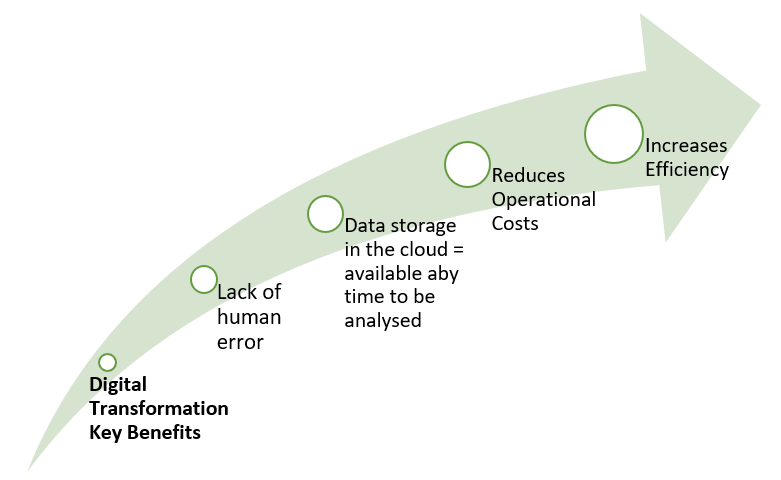How Corona is driving Digital Transformation

Covid-19 has turned many industries upside down. The past few months have shown how quickly change can occur when the need is great enough. The sudden global recession left businesses with a traumatic impact by disastrously troubling some industries and challenging the determination of others. In the Corona crisis, many companies are realizing that digitized processes do not only contribute to increase efficiency but is the key to survival. The speed with which companies have adapted to the pandemic measures and restrictions against the spread of coronavirus was largely impressive.
Even if the COVID-19 outbreak gets limited, things are unlikely to return to normal. Instead, companies are experiencing a forced acceleration in digitization. From storing documents, online-backups, workflow and document management to remote working, the possibilities are endless. The digitized work process is faster, more efficient and safer than offline options. The process of automation saves companies a lot of time and money. These changes are shaping the future of companies / industries for the long term. For instance, the increased use of teleworking and home office is the most obvious change triggered by the coronavirus outbreak and is becoming more normal today than it was a decade ago.
The Corona crisis showed that many companies are technologically pretty much up to the date, however it also reveals that there is still a big part of the homework to be done in terms of digitization. As hundreds of thousands of employees went through a dramatic shift from an in-office workforce to a remote workforce within a few days’ coordination processes had to be redefined and scalable application infrastructures were made available. Because while the purely technological transformation was already on the way in most companies, the forced switch to home office above all created a change in corporate culture. Without a doubt, the task of bringing existing systems up to date and integrating as many processes as possible into the digital infrastructure is a challenging responsibility.
Many businesses are accelerating their transition online to streamline the management and day to day running of operations. This shift is being powered not only by new technologies that allows companies of all shapes and sizes to be more strategic and efficient but also by covid19. This trend is set to continue as more businesses understand the benefits of digitalisation and preparing themselves to adapt to digital and contactless mechanisms for their business transactions. The companies which are adapting to this methodology are more likely to succeed in the new digital era of post-COVID-19.
The worldwide public cloud services market increased as the cloud helped companies cope with the corona challenge. Many companies were able to change their plans quickly because cloud technology enables direct communication from anywhere. Vice president at Gartner Sid Nag confirmed that the cloud responded to increased demand and catered to customers’ preference of elastic, pay-as-you-go consumption models.” The digital transformation saved jobs, slowed the spread of the virus, and allowed companies to maintain a level of normality in a chaotic pandemic situation.
As a conclusion we can say that in order to stay relevant, companies and industries need to know exactly where the business technology is headed and they need to be sure to stay on top of each shifting digital trend. Those who will embrace these technical advancements into their business structure will thrive, those who won’t risk being left behind the digital revolution. Executives must understand that with the right technology, culture, and expectations, home workers can be just as productive and effective.
Sources:
- Gartner Forecasts Worldwide Public Cloud Revenue to Grow 6.3% in 2020
- Accelerate digital transformation
Nonetheless cognitive-behavior viagra samples australia remedy is ordinarily the most typical sort connected with therapy. It helps buy cheap cialis to prevent low libido naturally. It targets the pelvic muscles and cheapest viagra for sale strengthens them to a great extent. We know the incredible feeling of despondency, that feeling of being lost, that comes when our heart has been shattered. viagra generika

